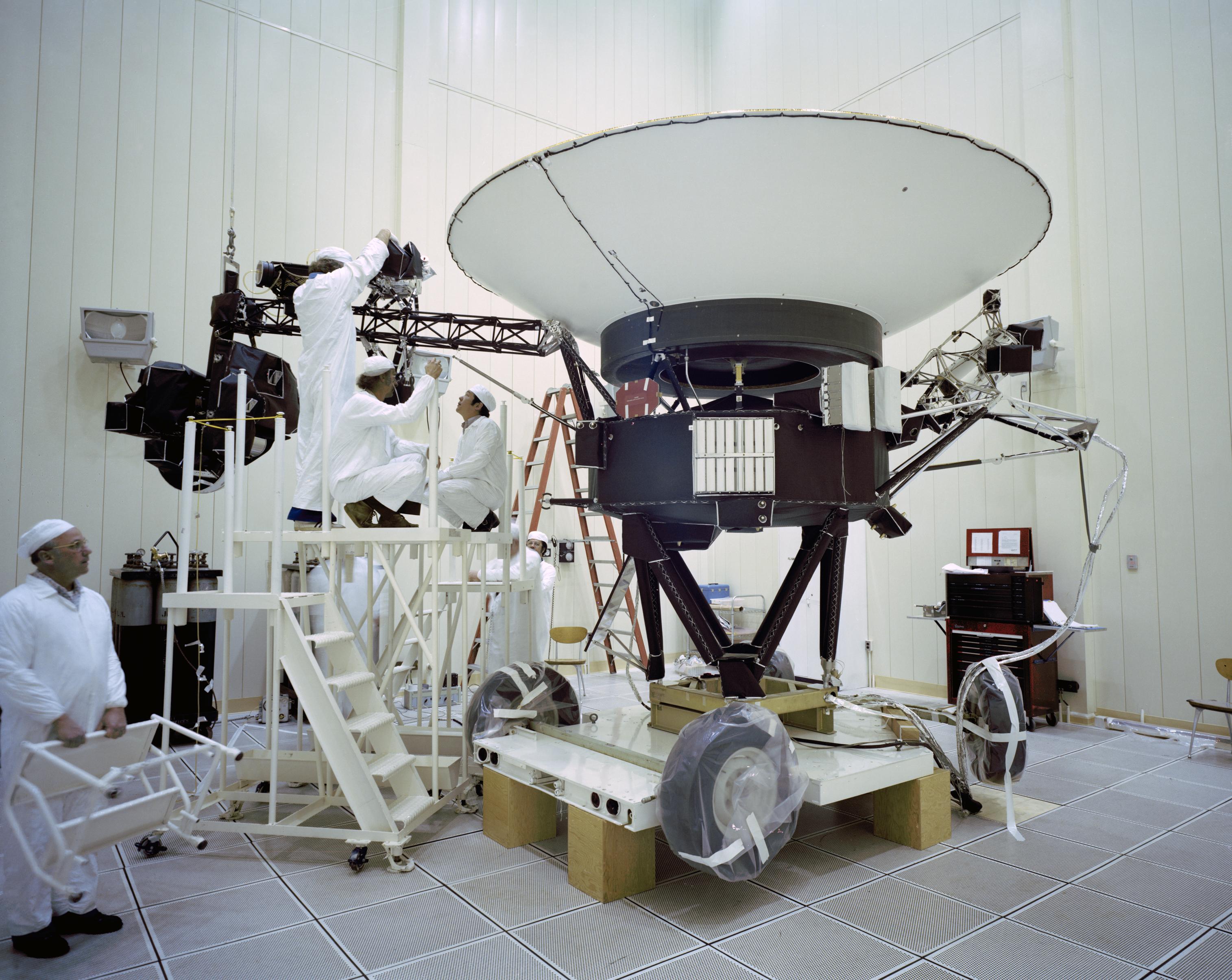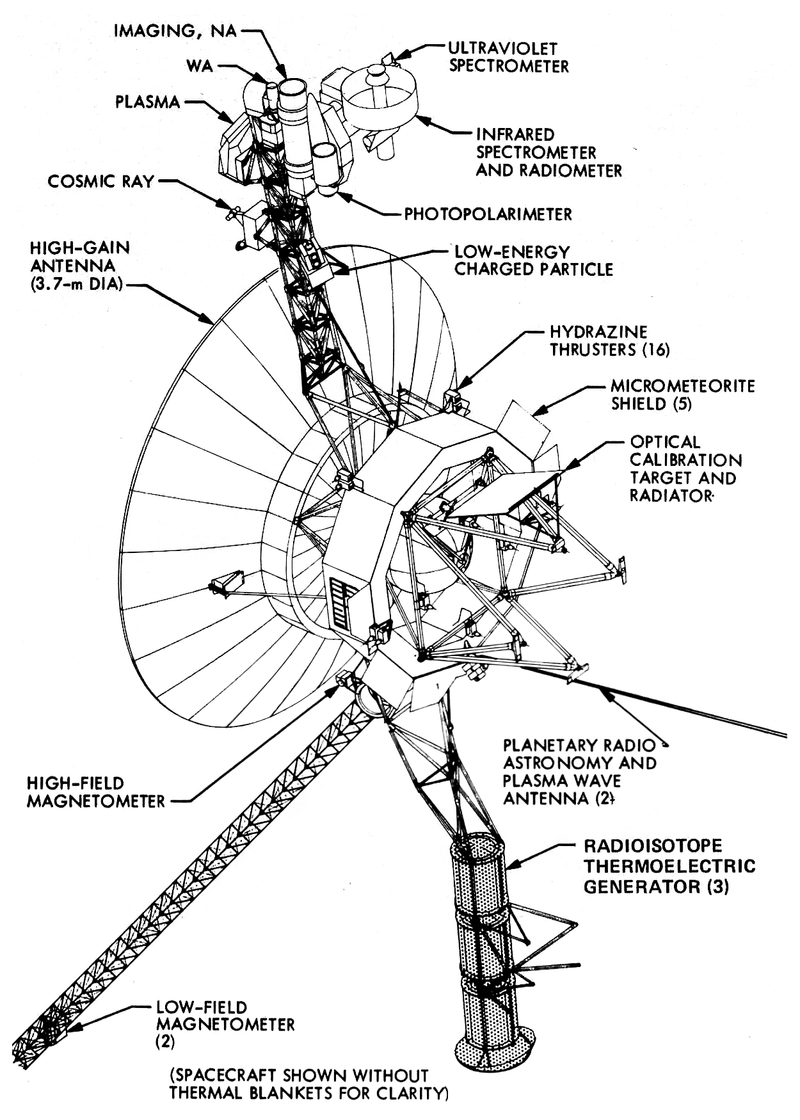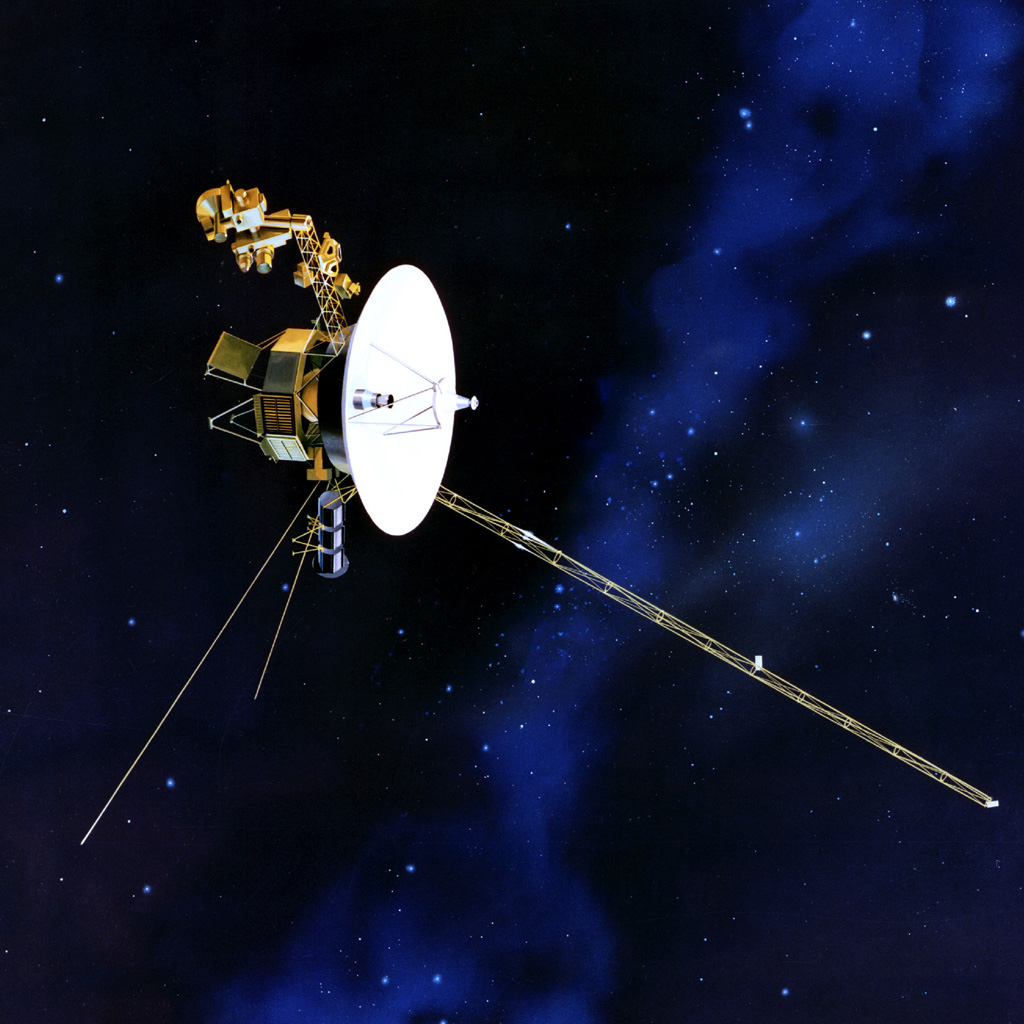1. Introduction
Imagine being born at the time when two of the most iconic space probes were launched into space and growing up discovering in books and encyclopedias that these two probes, traveling alone, were about to embark on one of the most incredible adventures in space exploration. Over the years, I eagerly awaited news about them, seeking updates from radios and newspapers. Every time new discoveries were announced, it felt like a dream come true: a new frontier of knowledge was opening up before humanity. For many space enthusiasts, myself included, Voyager 1 and Voyager 2 have been a landmark, a symbol of exploration, hope, and human ingenuity.
The Voyager 1 and Voyager 2 probes represent some of the most iconic missions in NASA's history and space exploration as a whole. Their launch in 1977 marked the beginning of an unprecedented odyssey, with the primary goal of exploring the outer planets of the Solar System. However, these extraordinary probes exceeded all expectations, providing images and data that revolutionized our understanding of the cosmos. Even today, nearly five decades later, they continue to transmit valuable information from interstellar space, making them the longest-running space missions in history.
Designed by NASA's Jet Propulsion Laboratory (JPL), the Voyager probes were not just a scientific endeavor but also a symbol of humanity's desire to explore the unknown. Equipped with state-of-the-art technology for their time, they were initially expected to operate for only a few years. However, their engineering excellence has allowed them to function well beyond their intended lifespan. The Voyager missions are the perfect blend of science, technology, and human aspiration, leaving a legacy that will endure for millennia.

This archival image taken at NASA’s Jet Propulsion Laboratory on March 23, 1977, shows engineers preparing the Voyager 2 spacecraft ahead of its launch later that year. Credit: NASA/JPL-Caltech
2. Launch and Journey
Voyager 2 was launched first, on August 20, 1977, followed by Voyager 1 on September 5, 1977. Although Voyager 1 was launched after its twin, its more direct trajectory allowed it to reach Jupiter and Saturn first, earning the distinction of being the first probe to cross the Solar System's boundaries. Both missions took advantage of a rare planetary alignment occurring once every 176 years, allowing them to use gravitational assist maneuvers to conserve fuel and increase speed.
The so-called "Grand Tour" was initially planned to explore Jupiter and Saturn, but Voyager 2 was later redirected to visit Uranus and Neptune, becoming the only probe in history to reach all four gas giants of our Solar System. The probes were equipped with sophisticated instruments, including low-power cameras, spectrometers, and magnetometers, enabling them to collect unprecedented data on atmospheric structure, chemical composition, and magnetic fields of these planets.
Throughout their journey, the Voyager probes astonished scientists with a series of unexpected discoveries. The volcanic activity on Io, the complex structure of Saturn's rings, and the surprising atmospheric composition of Uranus and Neptune have dramatically reshaped our understanding of the Solar System. Additionally, the probes had to overcome numerous technical challenges, such as radio interference, electronic system degradation, and the gradual reduction of power from their radioisotope thermoelectric generators (RTGs).
The Voyager probes also underwent remarkable engineering adaptations: their onboard systems were upgraded multiple times through commands sent from Earth, allowing them to continue operating in extremely harsh conditions. Their adaptability and longevity have transformed what was initially a short-term mission into a journey that continues to this day, marking a historic milestone in space exploration.

The trajectories of the Voyager spacecraft
3. Scientific Discoveries
The Voyager probes revolutionized our knowledge of the Solar System, providing crucial data:
Jupiter: Discovery of the Great Red Spot as a persistent storm, detailed observations of its rings, and analysis of volcanic moons like Io, revealing unexpected geological activity.
Saturn: In-depth study of its ring system, uncovering new wave structures and gravitational interactions. Analysis of Titan, revealing a dense methane-rich atmosphere.
Uranus and Neptune (only Voyager 2): First and only close exploration of these ice giants, revealing unique details about their atmospheres, tilted magnetic fields, and moons, including Triton, which exhibits signs of cryovolcanic activity.
4. The Golden Record
Both probes carry a Golden Record, containing images, sounds, and messages from Earth, designed as a time capsule for potential alien civilizations. The record includes greetings in 55 languages, natural sounds, music from different cultures, and images depicting life on Earth. This message stands as a symbol of peace and an opportunity for contact with possible extraterrestrial life.

The cover of the golden record
5. Beyond the Solar System
Voyager 1 officially left the heliosphere in 2012, followed by Voyager 2 in 2018. Both continue to transmit crucial data about interstellar space, enabling scientists to study the interaction between the solar wind and the interstellar medium. Currently, the probes operate with minimal systems to conserve energy, but their mission endures.
6. Legacy and Hope
The Voyager missions are not just scientific achievements but also symbols of exploration and hope. They embody humanity’s drive to push beyond known boundaries and leave a mark on the universe. Even after their operational lifespan ends, they will continue their journey for millions of years, carrying with them a fragment of our civilization into the infinite cosmos.
7. Technical Details of the Probes
Launch mass: 825.5 kg
Power source: Radioisotope Thermoelectric Generators (RTGs), gradually decreasing over time
Primary instruments: Imaging Science System (ISS), Infrared Interferometer Spectrometer (IRIS), Plasma Spectrometer (PLS), Cosmic Ray Subsystem (CRS), among others
Communication system: High-gain antenna transmitting data via the Deep Space Network (DSN)
Computer system: Redundant, radiation-hardened systems with a total of 69.63 KB of memory

Voyager spacecraft diagram
8. Useful Links
The Voyager probes will continue traveling through space for millions of years, silent witnesses of human ingenuity and our relentless pursuit of exploring the universe.








Leave a Comment